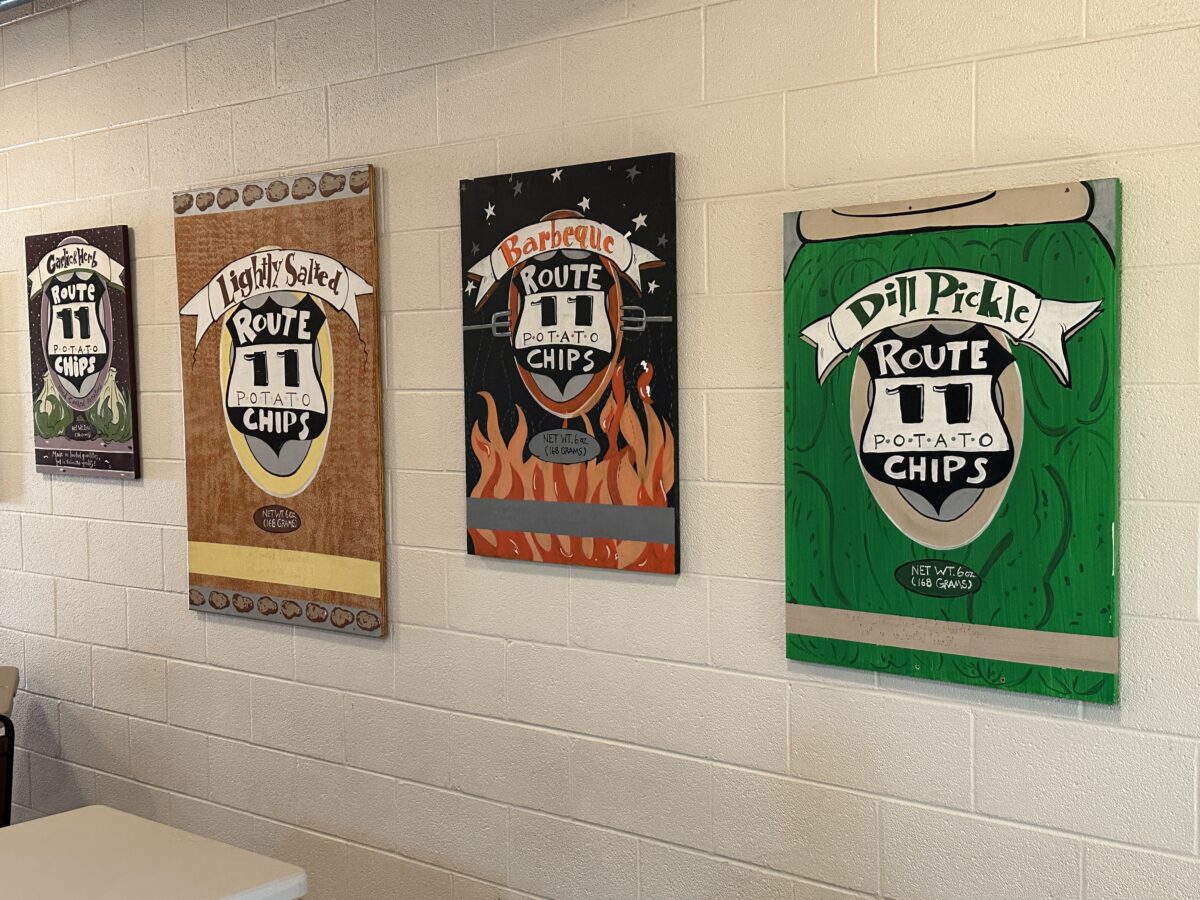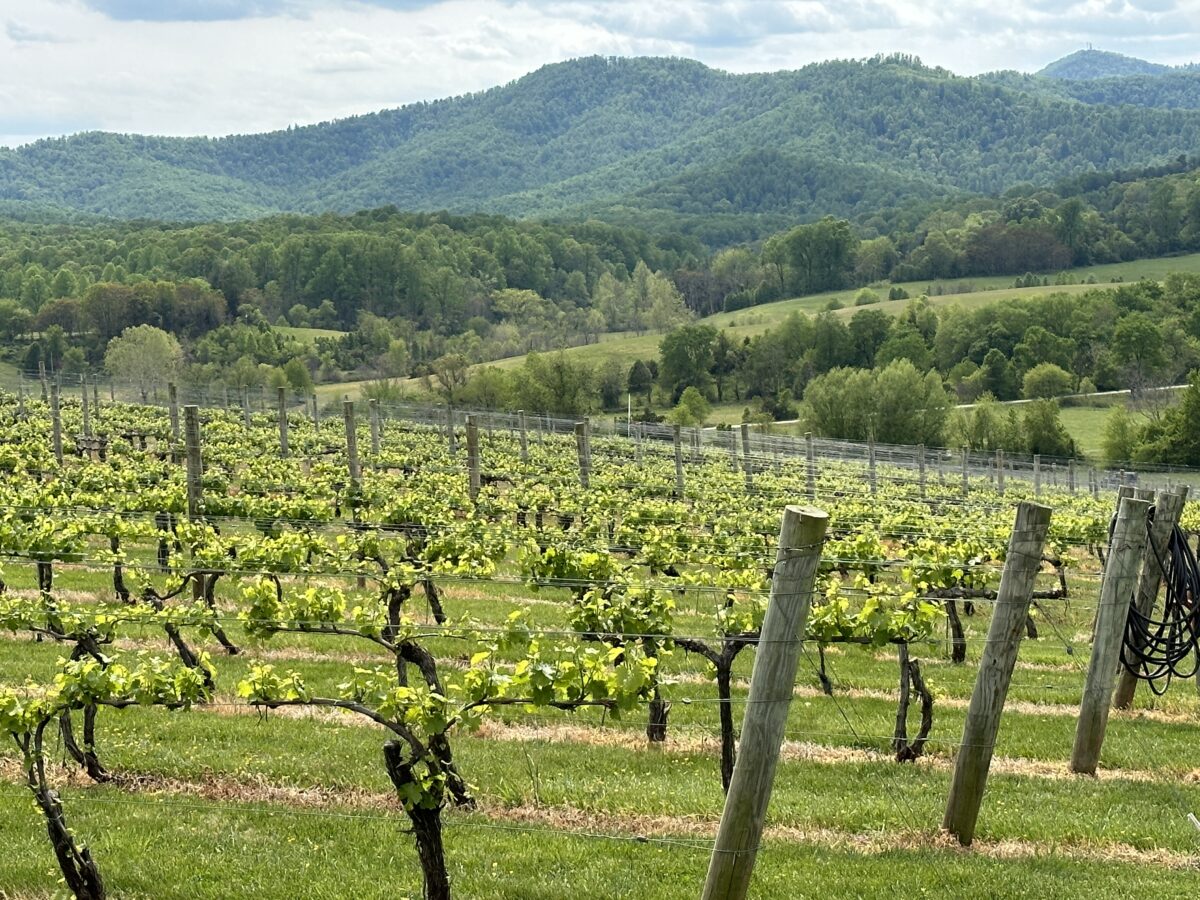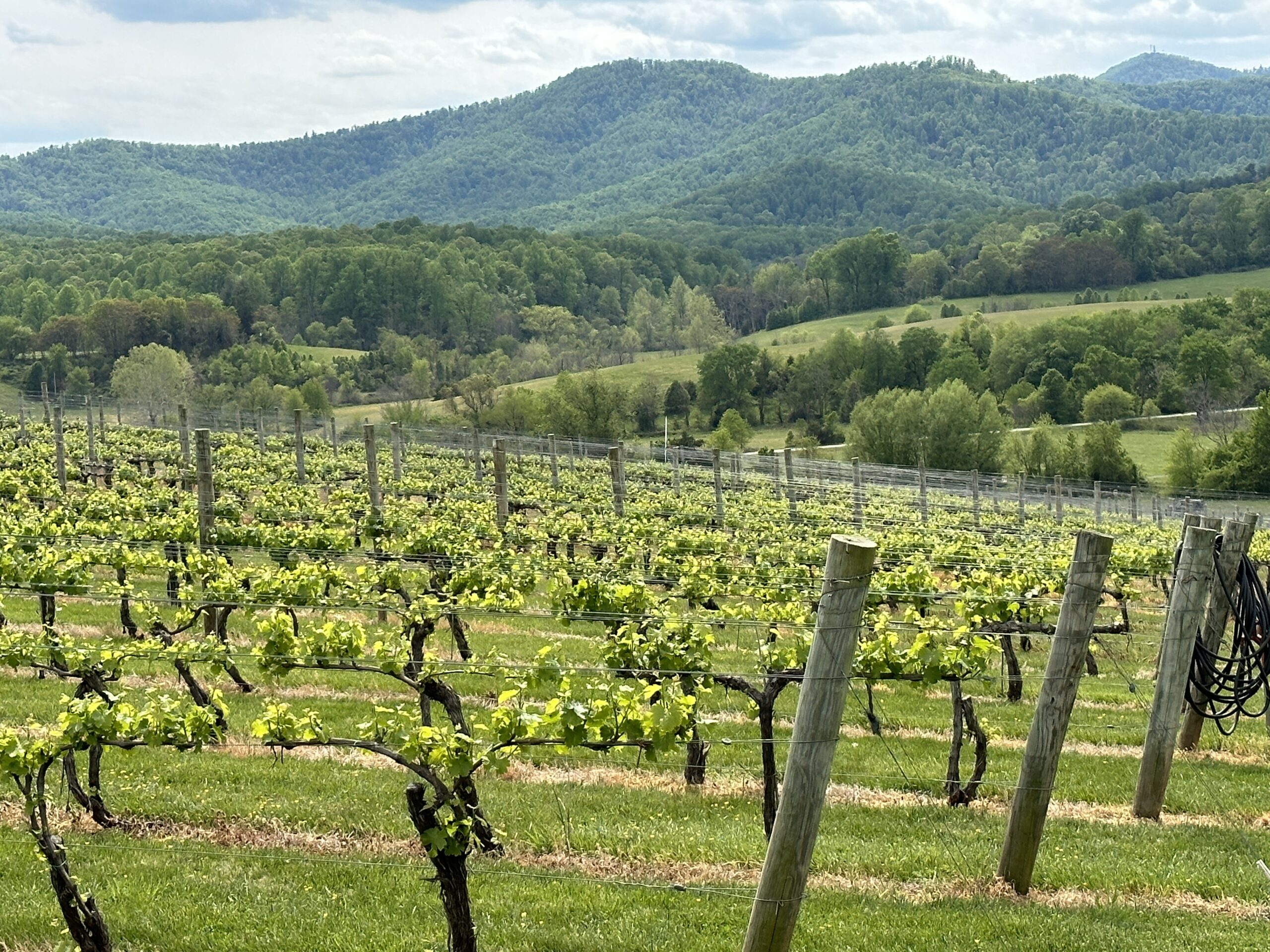 Can we change up the old adage to say, “Get your chips on. . .Route 11”?
Can we change up the old adage to say, “Get your chips on. . .Route 11”?
OK, so it may not evoke the same memories as the old Route 66 song, but the statement is true. If you have the chance, pick up a bag or two (or ten) of Route 11 Kettle-Cooked Chips.
 Here’s the story: Sarah Cohen (pictured above) and a partner started producing small batch potato chips in 1992. They went with the old-fashioned way of cooking them, and built their way up to a 25,000 sq. ft. state-of-the-art facility located on—what else—Route 11 in the Shenandoah Valley of Virginia. While they still work in small batches, they now cook up between 15,000-30,000 pounds of potatoes a day.
Here’s the story: Sarah Cohen (pictured above) and a partner started producing small batch potato chips in 1992. They went with the old-fashioned way of cooking them, and built their way up to a 25,000 sq. ft. state-of-the-art facility located on—what else—Route 11 in the Shenandoah Valley of Virginia. While they still work in small batches, they now cook up between 15,000-30,000 pounds of potatoes a day.
 Cohen is understandably proud of their 31st anniversary this year. “It started with me and one other person,” she says. “Now we have 50 employees.”
Cohen is understandably proud of their 31st anniversary this year. “It started with me and one other person,” she says. “Now we have 50 employees.”
As for selling the product, she points out that the company’s namesake, Route 11, makes a difference. “When I started the business, I had to beg people to deliver. Now people are driving by and they stop. We are within 500 miles of 60 percent of the U.S. population.”
Cohen, who grew up working in a family-owned hotel and restaurant in D.C., says she chose potato chips “because they have velocity—they move off the shelves quickly.” It also taught her the value of good working relationships. She says, “I knew I didn’t want a lot of employee turnover, so I really bend over backwards to make sure my staff is happy. Now 75 percent of them have been working here between 10 and 15 years.”
 Of course, it all starts with selecting quality potatoes, sourcing locally when they can. In fact, they buy a million pounds of potatoes from one local farmer alone per season. Then it’s a matter of patiently working through the process. It takes two full days to cook 50,000 pounds of potatoes.
Of course, it all starts with selecting quality potatoes, sourcing locally when they can. In fact, they buy a million pounds of potatoes from one local farmer alone per season. Then it’s a matter of patiently working through the process. It takes two full days to cook 50,000 pounds of potatoes.
“Since day one we’ve encouraged people to come in and see the process,” Cohen says. The lobby of the plant is testament to that, with windows open to see the potatoes through each step.
 Those steps are:
Those steps are:
Step One: The potatoes arrive, then are seasoned and weighed.
Step Two: Peeling, which sounds daunting until you realize they have a machine that does 50 pounds in 20 seconds.
Step Three: Slicing. In just 8 minutes 100 pounds of potatoes turns into 25 pounds of chips.
Step Four: Cooking—in sunflower oil.
Step Five: Chip inspection for quality control. (And, for the record, the cows down the road get all the chip rejects!)
Step Six: Package, distribute, eat, repeat.

While they have high tech conveyors and scales, this is still small batch, with people at every stage. “We’ve kept jobs that could be automated,” says Cohen. “We only have two production lines. The equipment requires someone to stand there anyway.” She adds, with a grin, “They are like chefs on steroids!”
As for their customers, Cohen says they are primarily mom and pop stores, with some regional grocery and a pick-up from Costco for their region only. While the big business is nice, Cohen points out, “When we are this small we can’t sell to everybody.” She says that makes them “very selective about our customers. We want low maintenance and high margins.”
Then she brings out warm potato chips, fresh from the production line. “People are dedicated to their potato chip brand,” she warns. “It’s a comfort food. It can be hard to get them to switch.” In spite of her words, we are immediately hooked. The bag of warm chips is soon gone, replaced by a huge bag of packaged variety flavors.  “We were the first ones ever to invent the dill pickle flavor on chips,” says Cohen, who is wearing a green t-shirt with the saying, “Dill Pickles Are a Big Dill.”
“We were the first ones ever to invent the dill pickle flavor on chips,” says Cohen, who is wearing a green t-shirt with the saying, “Dill Pickles Are a Big Dill.”
She adds, “We are certified kosher. The rabbi shows up every two months for an extensive inspection process.” (And, we suspect, for some chips.)
The chips run the gamut from the traditional flavors such as Barbeque and Salt N Vinegar, to the traditional with a twist: a seasonal Yukon Gold “which tastes like butter,” and a seasonal Sweet Potato. They have Chesapeake Crab, and a hot variety called Mama Zuma’s Revenge. You can get a bag of Lightly Salted, or Sour Cream N Chive, or Salt and Pepper, or even No Salt.
 Then, if you still want to carry some Route 11 with you, check out the earrings made from recycled chip bags. It’s a sign of the commitment to local, to sustainability, and, yes, to a little bit of quirky. So, if you find yourself on Route 11, be sure to stop. For a real kick, try the Dill Pickle.
Then, if you still want to carry some Route 11 with you, check out the earrings made from recycled chip bags. It’s a sign of the commitment to local, to sustainability, and, yes, to a little bit of quirky. So, if you find yourself on Route 11, be sure to stop. For a real kick, try the Dill Pickle.
About This Series
The Shenandoah Valley is nestled between the Blue Ridge and Appalachian Mountains in historic and scenic west-central Virginia. It has the transportation infrastructure and connection to markets in every direction. One of their major areas of focus is the food processing taking place in the region. The Food Channel recently had the opportunity to work with the Virginia Economic Development Partnership (VEDP) to tour some of the up and coming places, and to talk with entrepreneurs as well as established business people eager to tell the Virginia story.
Some accommodations for these stories were provided by the Virginia Economic Development Partnership (VEDP).
About the Shenandoah Valley
The Shenandoah Valley is nestled between the Blue Ridge and Appalachian Mountains in historic and scenic west-central Virginia. Interstates 81 and 64 traverse the region, providing an excellent transportation infrastructure and connection to markets in every direction. The area is plentiful in natural resources and boasts a powerful cluster of employers rooted in manufacturing, agriculture, and logistics. Food and beverage production is at the heart of the manufacturing sector, representing four times the national average and employing more than 5% of the Valley’s labor force of over 175,000 people at major companies. The Shenandoah Valley is also the No.1 region in Virginia for the total value of agricultural products sold.
Photos by Paul K. Logsdon



